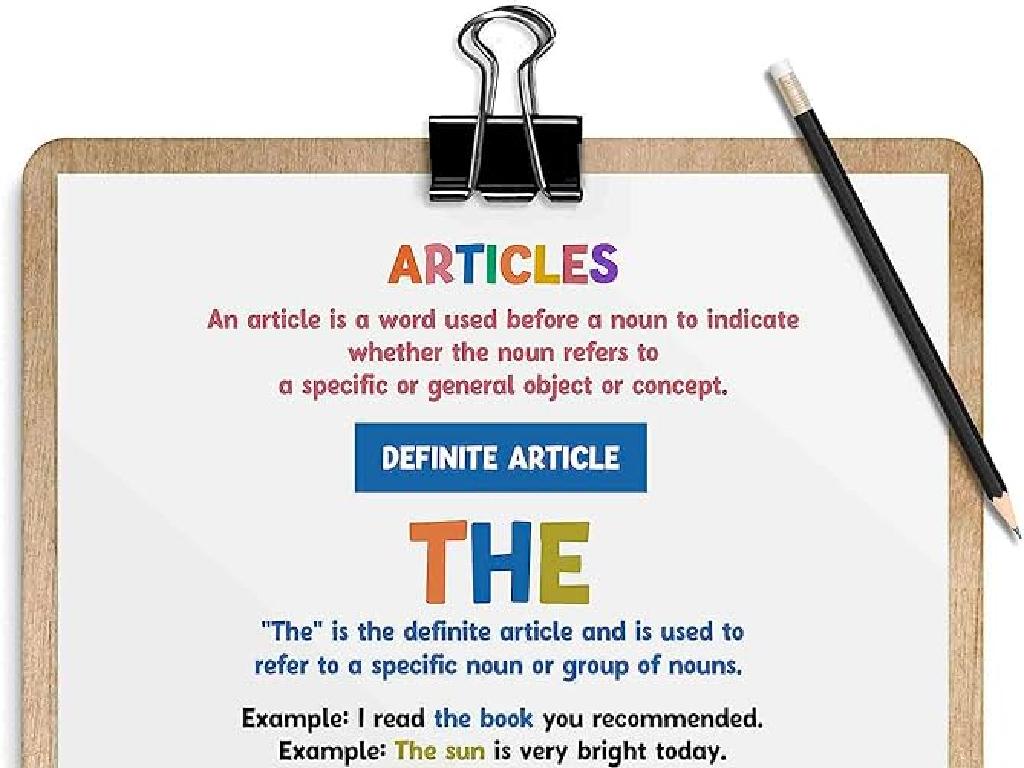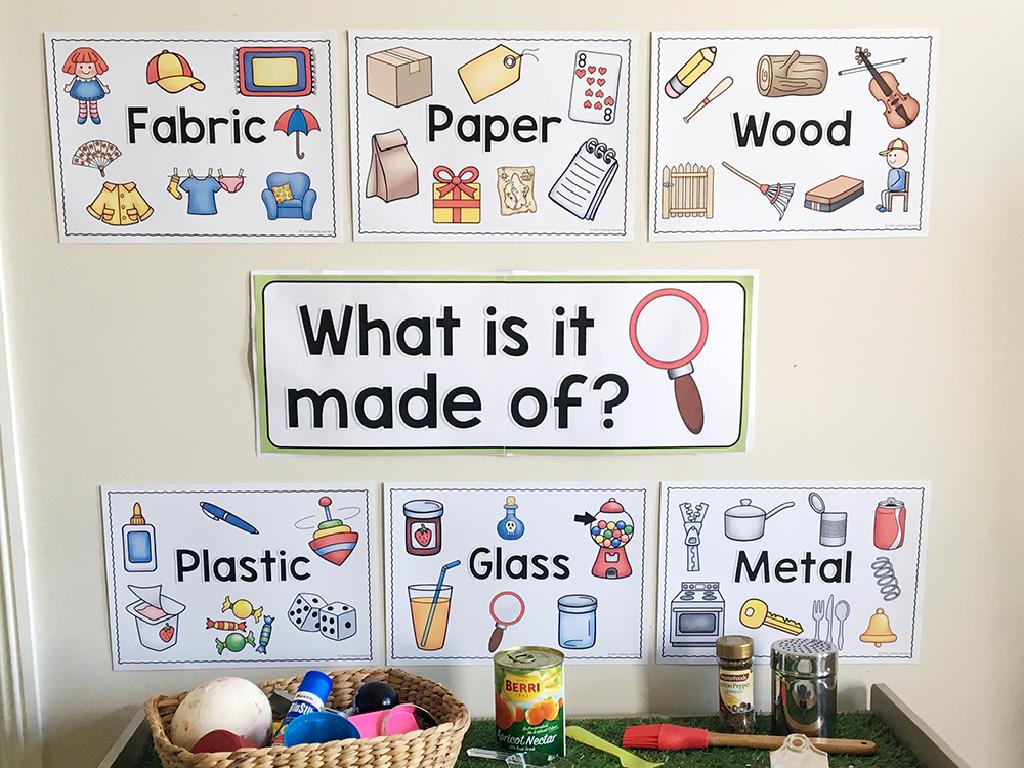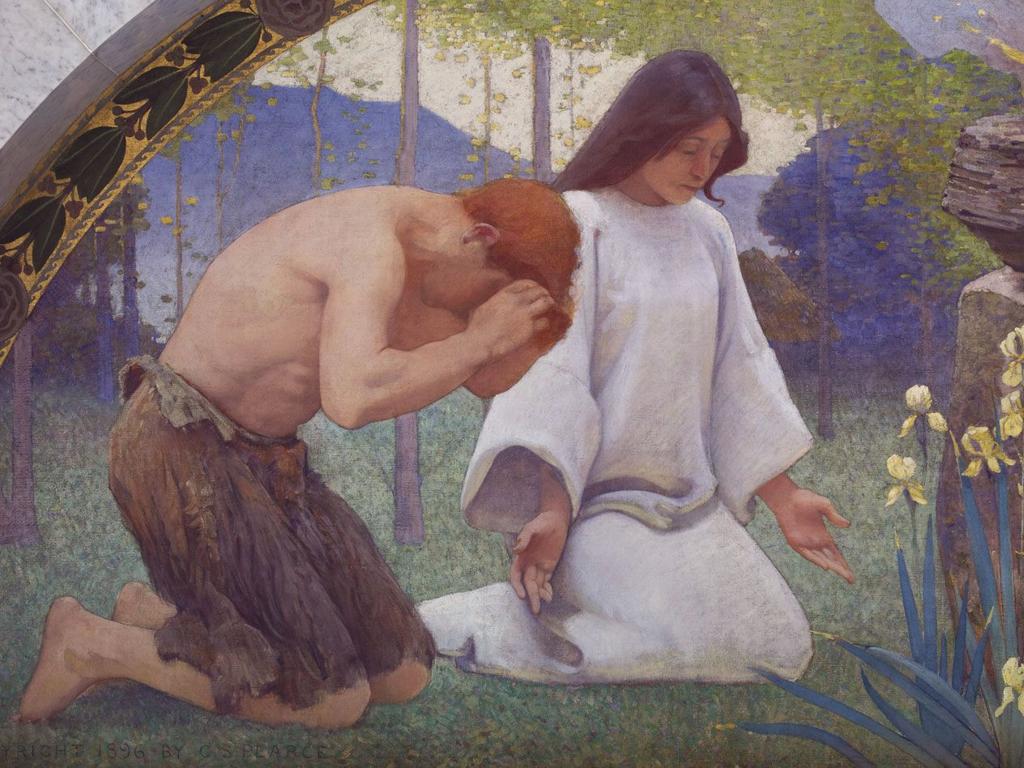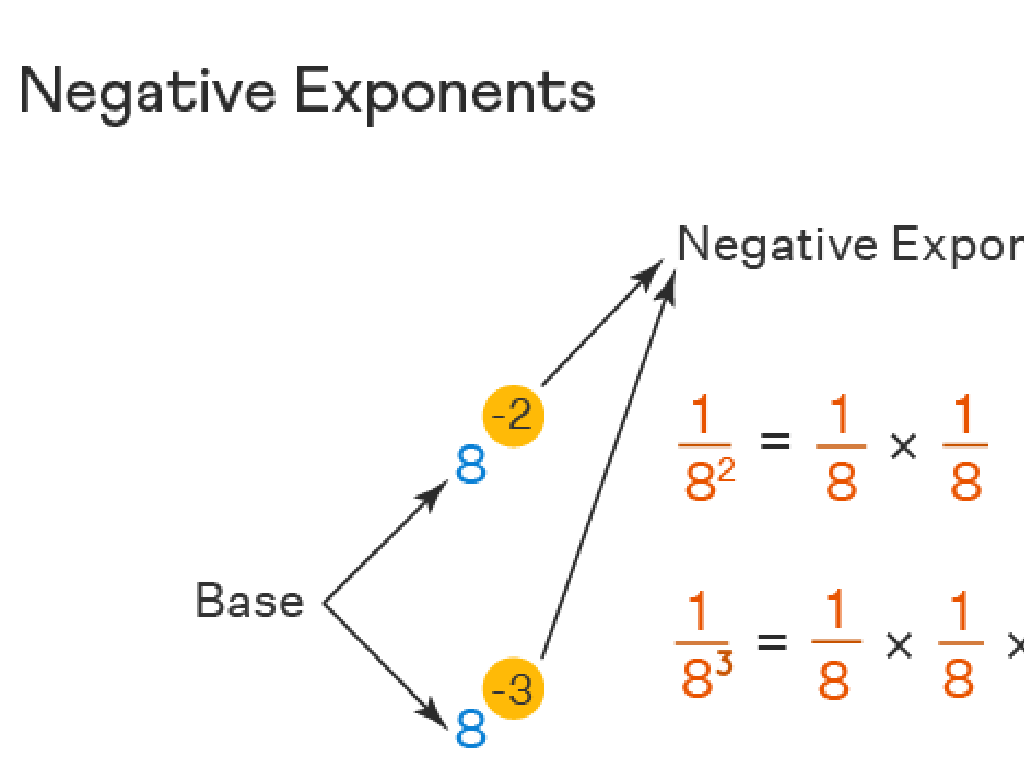Europe 1800 - 1900
Subject: Arts and humanities
Grade: High school
Topic: Art History
Please LOG IN to download the presentation. Access is available to registered users only.
View More Content
Exploring 19th Century European Art
– Overview of 19th Century Art
– A period marked by revolutions, innovations, and the rise of individualism.
– Social & Historical Context
– The era reflected changes in society, politics, and technology.
– Key Art Movements
– Romanticism, Realism, Impressionism, Post-Impressionism shaped the art world.
– Impact on Modern Art
– These movements influenced the development of modern art and artists.
|
This slide introduces students to the dynamic world of 19th Century European Art, setting the stage for a deeper exploration of its impact on the cultural and social fabric of the time. The period was one of great change, with the aftermath of the French Revolution, the Industrial Revolution, and the rise of nationalism. Art movements such as Romanticism, with its emphasis on emotion and individualism; Realism, focusing on accurate depictions of everyday life; Impressionism, with its interest in capturing light and momentary impressions; and Post-Impressionism, which paved the way for modern art, all played significant roles. Students should understand how these movements reflected and influenced the societal shifts of the 19th century. Encourage them to think about how art is influenced by and reflects the time in which it is created.
Romanticism in European Art
– Romanticism: A cultural movement
– Emphasized emotion, nature, and individualism over classical norms.
– Delacroix, Goya, and Turner’s impact
– ‘Liberty Leading the People’, ‘The Third of May 1808’, ‘The Fighting Temeraire’ as examples.
– Emotion and imagination’s role
– Valued feelings and artistic expression over logic and structured form.
– Romanticism vs. Enlightenment ideals
|
Romanticism was an artistic, literary, and intellectual movement that originated in Europe towards the end of the 18th century. It was characterized by its emphasis on emotion and individualism as well as glorification of the past and nature, preferring the medieval rather than the classical. It was partly a reaction to the Industrial Revolution and the scientific rationalization of nature. In this slide, we explore the key characteristics of Romanticism, highlight seminal works by Delacroix, Goya, and Turner, and discuss the movement’s preference for emotion and imagination over the rationality and order that characterized the Enlightenment. Encourage students to reflect on how Romantic art makes them feel and to consider why artists might have chosen to emphasize emotion and imagination.
Realism in Art: Reflecting Society
– Realism as a counter to Romanticism
– Realism emerged in the 19th century, focusing on ordinary subjects as opposed to the idealized Romanticism.
– Everyday life in Realist art
– Realist artists depicted scenes from daily life, especially of peasants and workers.
– Artists: Millet, Courbet, Daumier
– Jean-François Millet, Gustave Courbet, and Honoré Daumier were prominent Realist artists.
– Art as social commentary
– Realist works often highlighted social issues and the plight of the working class.
|
This slide introduces students to Realism, an art movement that began in the 19th century as a reaction to the excesses of Romanticism. Realism sought to portray subjects as they were, without idealization, often focusing on the lives of peasants and the working class. Key figures like Millet, Courbet, and Daumier used their art to depict the reality of everyday life and offer social commentary on the conditions of the lower classes. This movement was significant in its portrayal of the unvarnished truth of the human condition, and it paved the way for modern artistic expressions. Encourage students to consider how art reflects societal values and issues of its time.
Impressionism: A Revolutionary Art Movement
– Emergence of Impressionism
– Originated in 1870s France, challenging academic art norms
– Masters of light and moment
– Monet, Renoir, Degas captured fleeting effects of light and life
– Plein Air painting technique
– Artists painted outdoors to catch natural light and its changes
– Evolution of color usage
– Bold, visible brushstrokes and vibrant colors became signature
|
Impressionism marked a radical departure from traditional art by focusing on the impression of a moment, especially in terms of light and color. It began in France in the 1870s, with artists like Claude Monet, Pierre-Auguste Renoir, and Edgar Degas leading the movement. They sought to capture the transient effects of light on landscapes and human figures, often painting en plein air, or outdoors, to directly observe the changing conditions. This practice also led to a new use of color, where rather than blending smoothly, colors were applied in bold, visible brushstrokes. The slide should emphasize the innovative techniques of Impressionist artists and their impact on the art world. Encourage students to explore how Impressionism reflects the societal changes of the time and to consider the ways in which these artists broke from tradition to create a new visual language.
Post-Impressionism: The Evolution of Art
– Post-Impressionism: Beyond Impressionism
– Artists sought to convey deeper meanings, using symbolism and personal styles.
– Key figures: Van Gogh, Gauguin, Cézanne
– Van Gogh’s ‘Starry Night’, Gauguin’s ‘Where Do We Come From? What Are We? Where Are We Going?’, Cézanne’s ‘Mont Sainte-Victoire’
– Emphasis on personal expression
– Techniques that emphasized the artist’s emotional response to the subject.
– Paving the way for Modern Art
– These artists broke from tradition, influencing future art movements like Cubism and Fauvism.
|
This slide introduces students to Post-Impressionism, a movement that marked a departure from the Impressionist focus on light and color to explore more symbolic and personal forms of expression. Highlight the contributions of Van Gogh, Gauguin, and Cézanne, who each developed unique styles that challenged conventional forms and perspectives. Discuss how their work laid the groundwork for Modern Art, setting the stage for the 20th-century art movements. Encourage students to consider how the artists’ personal experiences and perspectives influenced their work. Provide examples of their paintings to illustrate the distinctive techniques and thematic depth of Post-Impressionism.
Comparative Analysis in European Art (1800-1900)
– Contrast styles and themes
– Compare Romanticism’s emotion with Realism’s practicality
– Historical events shaping art
– Revolutions and industrialization reflected in art subjects and themes
– Evolution of artistic techniques
– From classical painting to Impressionist brush strokes
– New materials in art creation
– Introduction of photography and synthetic pigments
|
This slide aims to provide a comparative analysis of the diverse art movements that emerged in Europe between 1800 and 1900. Students should understand how contrasting styles and themes developed in response to the cultural and political climate of the time. For example, the emotional intensity of Romanticism can be contrasted with the everyday scenes depicted in Realism. Additionally, the impact of historical events, such as the French Revolution and the Industrial Revolution, had a profound influence on the subject matter and themes of art. The evolution of artistic techniques, such as the transition from neoclassical precision to the looser brush strokes of Impressionism, should be highlighted. Finally, the introduction of new materials and technologies, including the advent of photography and the development of synthetic pigments, revolutionized the creation and perception of art. Encourage students to explore these concepts through examples of artwork from each movement and to consider how these changes reflect broader societal shifts.
Class Activity: Analyzing Art Movements
– Select a painting from each movement
– Discuss characteristics & context
– Look for style, technique, and what was happening in history at the time
– Group presentation of analysis
– Interpret the art’s meaning
– What message do you think the artist was trying to convey?
|
This activity is designed to deepen students’ understanding of different art movements between 1800 and 1900 by engaging them in hands-on analysis. Students will choose representative paintings from various movements such as Romanticism, Realism, Impressionism, and Post-Impressionism. They will discuss the defining characteristics of each movement and the historical context in which the art was created. Each group will then present their findings to the class, sharing their interpretations of the artwork’s meaning and significance. For the teacher: Prepare a list of art movements and examples of paintings for students to choose from. Encourage critical thinking by asking probing questions during the presentations. Possible activities include comparing and contrasting artworks, role-playing as art critics, or creating a visual timeline of the movements discussed.
Reflecting on 19th Century European Art
– Recap major art movements
– Romanticism, Realism, Impressionism, Post-Impressionism
– Art mirrors society & history
– Consider how historical events shaped the art of the time
– Visit museums to see art
– Explore local museums to experience art firsthand
– Encourage personal reflection
|
This slide aims to summarize the key art movements of the 19th century in Europe, such as Romanticism, Realism, Impressionism, and Post-Impressionism, and to encourage students to think critically about how art is not only a form of expression but also a reflection of societal and historical contexts. Discuss how each movement responded to the preceding era and how artists expressed their views on contemporary events, changes in society, and advances in technology. Encourage students to visit local museums or galleries to see the artworks discussed in class, fostering a deeper personal connection with the art. Encourage them to reflect on their own experiences with art and how it can influence their understanding of history and society.





